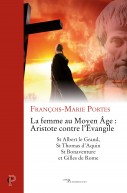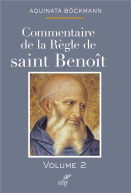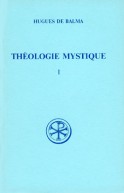
Gertrude d'Helfta : « Le Héraut de l'amour Divin »
Collection L'abeille
160 pages - janv. 2013
15,40€
Nous sommes dans la dernière décennie du XIIIe siècle, à Helfta, en Saxe, dans un monastère de femmes. La communauté est réunie pour accompagner de sa prière une sœur malade, à qui l’on porte la communion. Une moniale, du nom de Gertrude, sous l’impulsion de l’Esprit-Saint, commence alors à rédiger le récit de la grâce qui se déploie dans sa vie depuis neuf années, dans un climat de gratitude et de louange de Jésus, le Bien-Aimé. D’emblée, le Cantique des cantiques est ainsi placé en arrière-plan. Gertrude écrit pour que d’autres amis de Dieu tirent profit des grâces reçues. Son écriture évoque les tapisseries médiévales, leurs personnages richement parés et la nature foisonnante. Les images se pressent, mais la pensée théologique est solidement charpentée. Au rythme de l’année liturgique, de la vie de la communauté avec ses joies et ses épreuves, et de sa propre vie marquée par de fréquentes maladies, Gertrude montre comment la liturgie intensément vécue est le lieu d’une rencontre vivifiante avec le Christ. Elle témoigne d’une spiritualité heureuse, nourrie de louange, d’action de grâces, d’émerveillement, en s’inscrivant dans la lignée de ces contemplatifs qui, depuis saint Jean, n’ont cessé de porter leur regard sur le côté transpercé du Christ.
--
The last decade of the 13th century, at Helfta, Saxony, in a monastery for women. The community has come together to pray for an ailing sister, who is being served Holy Communion. A nun by the name of Gertrude, inspired by the Holy Spirit, begins to write an account of that grace which had infused her life for the past nine years, in a mood of gratitude and praise for her beloved Jesus. Immediately, the Song of Songs slips into the background. Gertrude writes so that other friends of God might draw advantage from the grace she has received. Her writing evokes medieval tapestries, with their richly apparelled characters and abundance of natural detail. The imagery may be compelling, but her theological thinking is soundly structured. Describing the evolving liturgical year and the life of her community, with its joys and hardships, as well as her own existence - marked by frequent illness - Gertrude shows how intense participation in the liturgy can lead to an invigorating encounter with Christ. She bears witness to a contended spirituality that is rich in praise, acts of grace and wonderment; joining the long line of contemplatives who, since St. John, have relentlessly contemplated the wound in Christ’s side.
--
The last decade of the 13th century, at Helfta, Saxony, in a monastery for women. The community has come together to pray for an ailing sister, who is being served Holy Communion. A nun by the name of Gertrude, inspired by the Holy Spirit, begins to write an account of that grace which had infused her life for the past nine years, in a mood of gratitude and praise for her beloved Jesus. Immediately, the Song of Songs slips into the background. Gertrude writes so that other friends of God might draw advantage from the grace she has received. Her writing evokes medieval tapestries, with their richly apparelled characters and abundance of natural detail. The imagery may be compelling, but her theological thinking is soundly structured. Describing the evolving liturgical year and the life of her community, with its joys and hardships, as well as her own existence - marked by frequent illness - Gertrude shows how intense participation in the liturgy can lead to an invigorating encounter with Christ. She bears witness to a contended spirituality that is rich in praise, acts of grace and wonderment; joining the long line of contemplatives who, since St. John, have relentlessly contemplated the wound in Christ’s side.
- Dimensions : 125x195x13
- ISBN : 9782204091732
- Poids : 190 grammes






